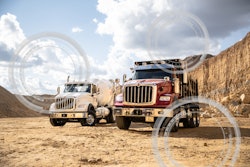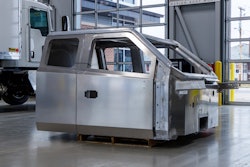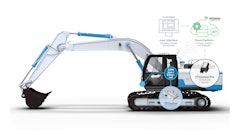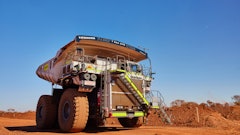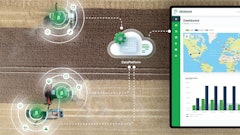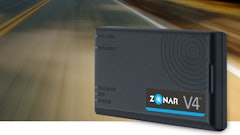
Data is pivotal for fleet managers to maximize the efficiency of their fleets. As more fleets make the move to electric work trucks, the data from those trucks must be gathered and utilized in such a way that vehicle downtime is avoided in the future. This is where telematics come into play for electric fleet implementation.
Telematics involves placing an application programming interface (API) signaling device on a vehicle to transmit data to a cloud. That information is then collected and stored in a database for easy access and used later with a data analytics software package. A telematics system should be integrated into the chassis and body of a truck for all work functions and communicated on a Control Area Network (CANbus). This kind of system can provide fleet managers and service technicians with remote diagnostics and troubleshooting, health monitoring, and performance data for a complete vehicle. These systems can also protect against theft through geofencing software and enhance overall vehicle safety.
This might sound like a simple process, but there are a number of factors to consider when implementing a telematics system into electric fleet vehicles.
What data do you need?
An electric truck can provide many different data points that can be viewed and analyzed. To better visualize, take a mental walk through your home and count the number of outlets on the walls. Perhaps you have 30 outlets. With a home telematics system, you could view those outlets on a dashboard and see exactly what is attached to each, how much power they’re drawing, the function and work each plugged-in device is doing at any moment in time, and more. You could then use this data to make sure that certain outlets are meeting criteria that improves your home’s use of electricity.
A telematics system provides fleet managers and service technicians the same opportunities for their electric work trucks. Data collected from trucks can come from the simplest components to the most critical electrical systems. The challenge is determining which data points must be readily available to keep the vehicles running at peak performance. Whether a headlight bulb is out or there’s a fault in an inverter, a telematics system should be customized so its users can be alerted on the most relevant information in order to both forecast and decide which problems should be addressed immediately and which can wait.
Once a specific dataset is finalized for a truck, it can be applied to trucks with the same duty cycle. However, when a fleet has a variety of trucks performing different duty cycles, the process of implementing a telematics system can be challenging.
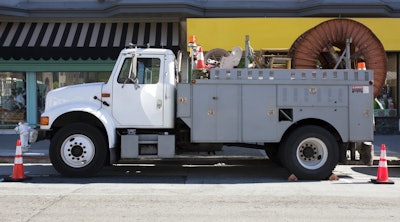 Depending on a truck’s application and duty cycle, it will provide different data points than other trucks in a fleet. With a telematics system, trucks can be grouped by their application so that each group has its own unique set of data and fleet managers can easily manage, read, and act on the information.Marion Body Works
Depending on a truck’s application and duty cycle, it will provide different data points than other trucks in a fleet. With a telematics system, trucks can be grouped by their application so that each group has its own unique set of data and fleet managers can easily manage, read, and act on the information.Marion Body Works
Different applications provide different data
Not all trucks in a fleet are created equal; therefore, not all datasets are created equal.
Applying a telematics system is not a set-it-and-forget-it process. This is especially true for operations that are connecting everything to the system, from flatbed applications to dump trucks. All of the data being pulled from each vehicle’s specific components must be accounted for and displayed so that fleet managers and service technicians know exactly what is happening with their equipment. For example, information gathered from an airport transport vehicle will vary greatly from a utility boom truck. Because of this, each application must have its own unique dataset that is tracked and evaluated through telematics.
This process becomes even more challenging when you consider the sheer amount of data that is being collected. A fleet may have 100 trucks, and if those trucks are performing different duty cycles or are frontline versus backline vehicles, a fleet manager is faced with thousands of single data points. By layering the data and grouping vehicles into manageable categories, telematics can simplify the information and only show what is desired for each vehicle category. This can all be done from the same platform and dashboard.
When the specific datasets are determined for each group of vehicles, the fleet manager and service technician can then decide how and when they want to view their data.
How do you want to see the data?
One of the convenient benefits of a telematics system is the ability to view the data how and when you want to. Data can be organized into grids, percentages, pie charts, and other formats depending on what is easiest for an operation to utilize. Additionally, telematics data allows users to easily compare information across time and components. A fleet manager may want to compare battery efficiency week to week, and a service technician may want to compare chassis data between trucks operating the same duty cycle. This helps to create a detailed service history that can be easily referenced.
A telematics system must be set up to show information in the most meaningful way possible, and sometimes that involves collaboration.
 A telematics system can show users the information they want in the format that best suits their needs.Marion Body Works
A telematics system can show users the information they want in the format that best suits their needs.Marion Body Works
Choosing a system
Fleets may sometimes have their own telematics systems in place, in which case a manufacturer must simply apply their APIs to the vehicles so the fleets can begin pulling data from the cloud into their program. However, some fleets may need to be equipped with a telematics system that is directly tied to the electric truck OEM. If a manufacturer offers its own system and dashboard, it can work closely with the end user to set up the system they require and program it to show the exact vehicle information that will improve the fleet. An additional benefit of using a manufacturer’s telematics system is consistency between all of the equipment because it’s coming from the same provider.
There is no one right answer when it comes to choosing a telematics system, but these are things to keep in mind.
An efficient future with telematics
A proper telematics system should fulfill two main objectives: ensuring the trucks are always running in a good state of health and providing data that can identify any anomalies within a fleet to forecast and detect performance problems. By looking at the past and current state of electric trucks, managers and technicians can mitigate future downtime by understanding the operational setups that are most efficient.
In a final article discussing electric truck implementation, we will discuss how our previous topics, including electric cab design, vocational upfitting on electric chassis, and charging infrastructure, come together with telematics in the wide adoption of electric trucks to a fleet.



